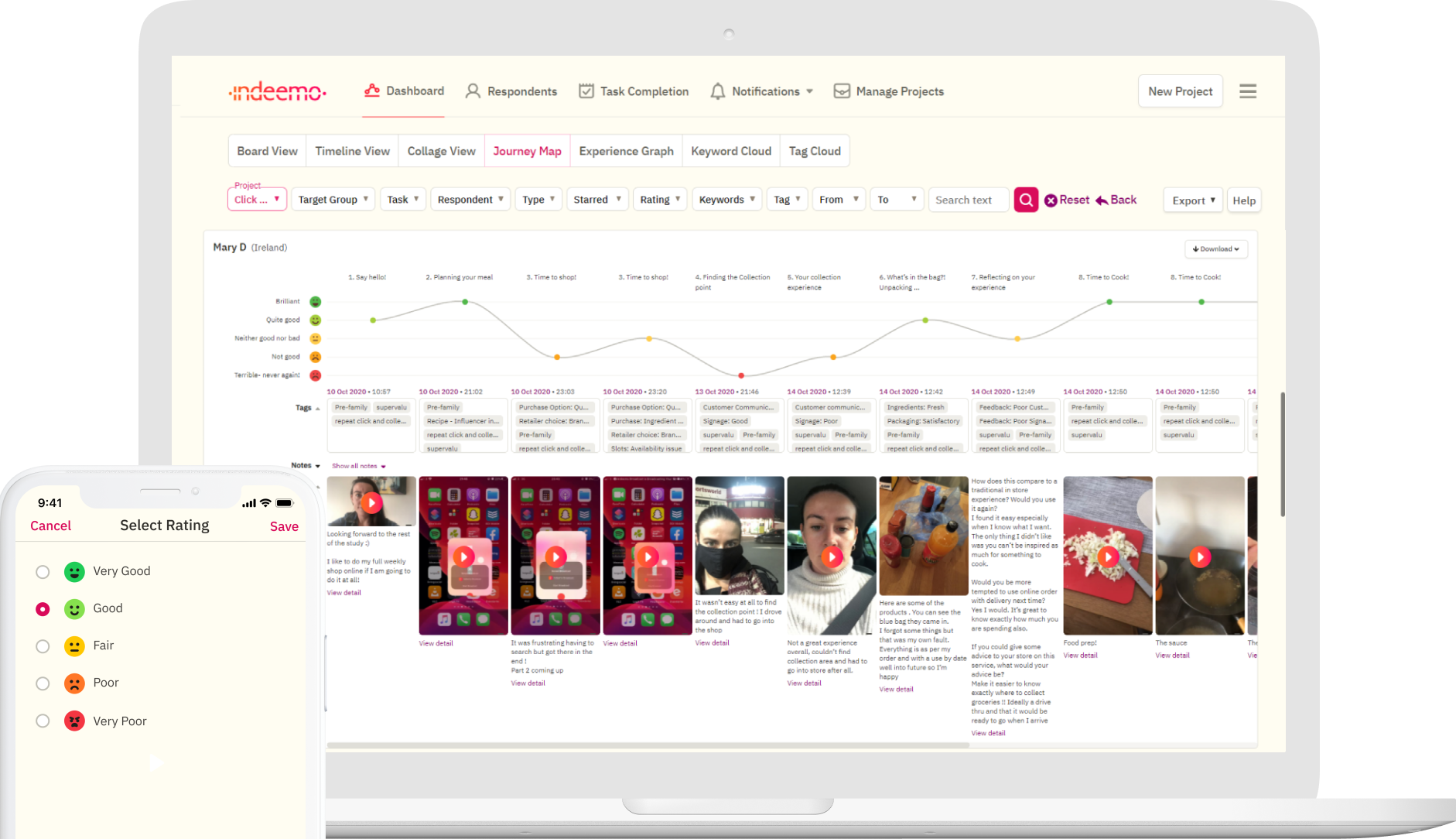The Benefits of Using a Customer Journey Mapping Tool for CX Research
A rich understanding of the Customer Experience, whether it B2B or B2C, is reliant on the collective minds of a diverse team. This rich understanding derives from a range of techniques, processes, research methods, and toolkits. Each of these, working together, help CX teams and marketing uncover the unique qualities of the customer experience. When we say unique, we refer to the complexities and variations of the customer experience relative to the demographic and path to purchase differences of your customers.
When we say complexities, we refer to the diverse channels your customers go through on their purchase journey. As we move increasingly towards digital modes of buying, and steer further away from the traditional bricks and mortar model, our delivery of good customer experience is informed more by our grasp of the nonlinear journey they take through the sales funnel.

With all of this in mind, the processes, techniques and toolkits that CX teams harness is also increasing. Journey Mapping has become a key player in helping management deliver the best customer experience. The customer journey map is a visual representation of your customers unique journey through your sales funnel. The journey map will typically include each touchpoint customers interact with, and represents the nonlinear approach of path to purchase.
Although the journey map is your visualisation of the customer journey, the process itself can be difficult to get off the ground. Customer Journey mapping itself, leverages the techniques and research methods CX and marketing teams deploy for effective customer experience management and marketing campaigns. A customer journey mapping tool then, affords these teams to integrate market research and customer experience research into the journey mapping process. Since we launched our Customer Journey Mapping Tool, we have begun to see an increase in the adoption and need for this to be integrated into the CX toolkit. Feedback from clients has highlighted a range of benefits resulting from this integration.
Uncovering Real Human Problems
A journey mapping tool, first and foremost, enables you to capture context and qualitative insights into the customer journey. For instance, when customers begin their purchase journey, how they behave and interact with a brand online draws out their opinions and perceptions of the initial touchpoint.
The qualitative nature of this often results in the uncovering of problems that your customers may experience - not understanding information, or not finding the information they are looking for etc. Even from a UX perspective, customers may find themselves unable to complete a desired action. Ultimately, you and your team will be able to identify real world problems that customers experience in their day to day lives.
Identify Customer Personas
On the one hand, organisations have just one customer. We can view and treat each customer the same. However, each customer experience can be different. More so, each customer journey can, and often will be different. As a result, we need to ensure that we cater for our customer needs, particularly when those needs vary.
We highlight identifying customer personas as one of the key benefits of a customer journey mapping tool. First, as you set out this exploration of the customer journey, instantly, variations of the journey begin to appear. Even more, customer touchpoints will vary, and their experiences, positive and negative, will also differ.
To put this into further context, although customers might set out to purchase the same product, they can begin their search and awareness process quite differently. With a customer journey mapping tool, you will be able to capture intersecting and diverging touch points. This will help you identify emerging customer personas along with capturing various problems they may experience.
Agility and Quick Insights
The purpose of a journey mapping tool is to help you generate rich and contextual insights about your customers. The tool itself harnesses the power of mobile technology and direct access to your customers in real time. These tools are, and should be agile. This means that your research team can implement various research strategies and design meaningful tasks for your customers to engage with throughout the customer journey process.
Additionally, the technological component of a journey mapping tool means that research participants, i.e. customers, upload their experiences at each touch point in real time. On the researchers end, you will begin to see patterns emerge as soon as uploads commence. As customers begin their purchase journey, you can follow them along the way. The journey map starts to formulate, and due to the multimedia data that builds out the journey, you will see insights emerge. In our experience, these insights typically come from the various omnichannels customers go through and the behaviours they exhibit during each stage of their journey with your brand.
Evokes Empathy
In the world of CX, and experience research more broadly, the concept of empathy is essential. Its importance aims to make organisations and brands customer-centric. Even more, human-centric. You will find that empathy building results from intuitive and exploratory research. This type of research (also referred to as generative research), often underpins innovation in design, and improvements across customer experience management and processes. So, how can a customer journey mapping tool benefit you and your team in building empathy for your customers? We believe that journey mapping should start off with the qualitative insights that come from optimising the tool itself. As an alternative to customer satisfaction surveys for example, the journey mapping tool plots the customer journey with layer upon layer of qualitative data.
Furthermore, this data comes in the form of video, photo, text, and screen recordings. It is here, through all these data points that you begin to capture the experiences across the customer journey.
Let's go even further. When you conduct your CX research with a customer journey mapping tool, you begin to uncover real life human problems. These problems, and these human experiences bring you into the customer's world. You see, feel, and hear their experiences. Your team will begin to understand types of behaviours at different touchpoints. Lastly, the combination of these learnings provides you with a significant CX research outcome. That is where empathy derives.
Brands and organisations that revolve around the customer will always have a shared sense of empathy for them. A customer journey mapping tool will evoke this empathy. It affords you and your team the opportunity to capture insights, develop a rich understanding, and build empathy for your customers.
Contact us
We’ve supported thousands of research projects covering everything from mapping the path to purchase for aquarium filters to mortgage buyer journeys to mapping the patient journey of kidney transplant patients.
If you’d like to discuss a specific patient diary research project or are just curious to learn more, get in touch now.





